Stairway to heaven: The churches at Romanov
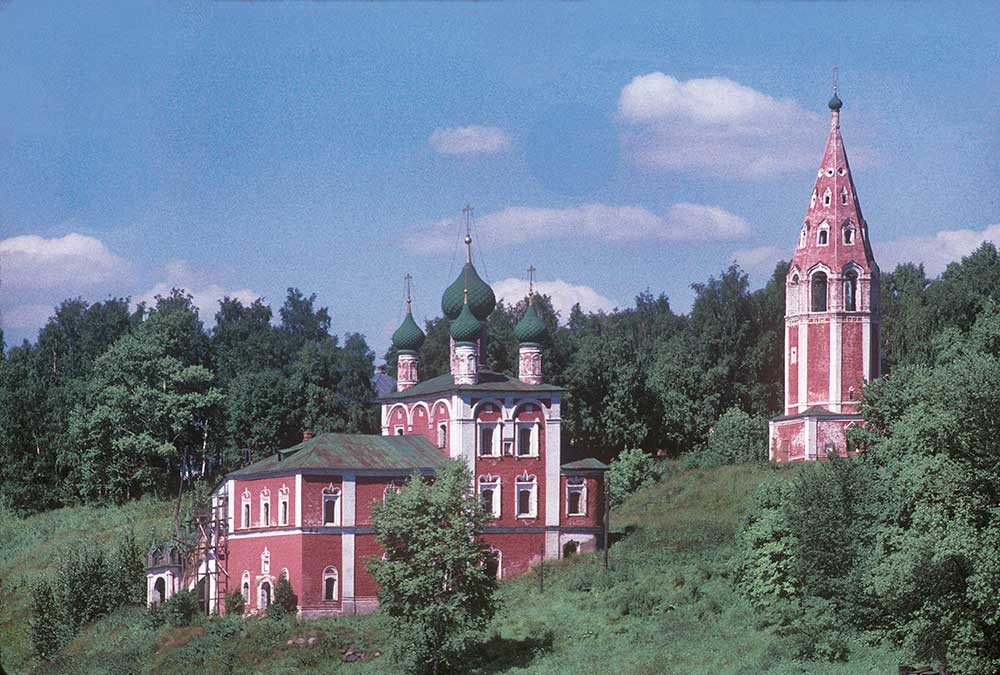
Romanov. Bell tower & Church of Kazan Icon of the Virgin. Southwest view from Volga River. July 25, 1997.
William BrumfieldAt the beginning of the 20th century, the Russian chemist and photographer Sergei Prokudin-Gorsky devised a complex process for vivid, detailed color photography. His vision of photography as a form of education and enlightenment was demonstrated with special clarity through his photographs of architectural monuments in the historic sites throughout the Russian heartland.
Logistical support for his project came from the Ministry of Transportation, which facilitated his photography on Russia’s waterways and expanding rail network. His trips along the upper and middle parts of the Volga River proved especially productive
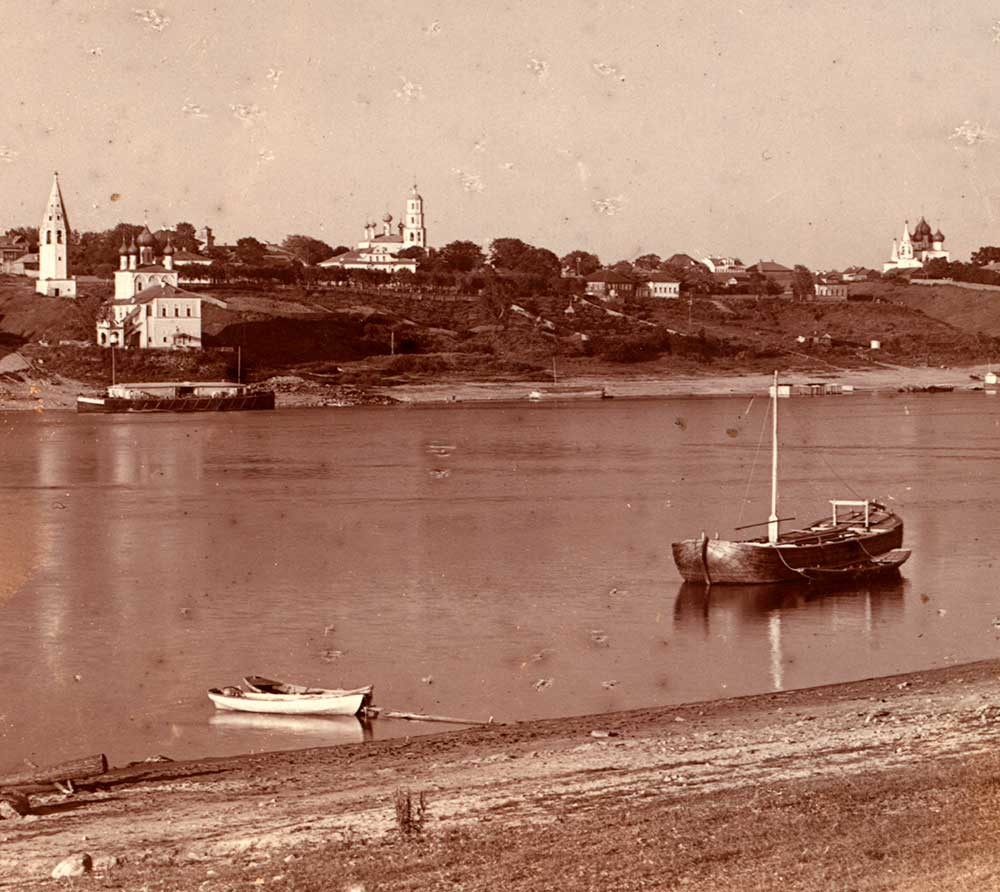
Romanov. View toward southeast from right bank of Volga River. From left: Church of Kazan Icon; Church of Resurrection (demolished 1930s); Cathedral of Elevation of the Cross. Summer 1910.
Sergei Prokudin-GorskySituated almost 185 miles northeast of Moscow and 25 miles northwest of the regional center Yaroslavl,

Cathedral of Elevation of the Cross. West view. July 25, 1997.
William BrumfieldTo avoid any association with the Romanov dynasty, the name was changed in 1918 to Tutaev, in memory of a Red Army soldier killed during an uprising against Bolshevik power in nearby Yaroslavl. In fact, the “Romanov” component of the settlement name appeared long before the founding of the Romanov dynasty in 1613.
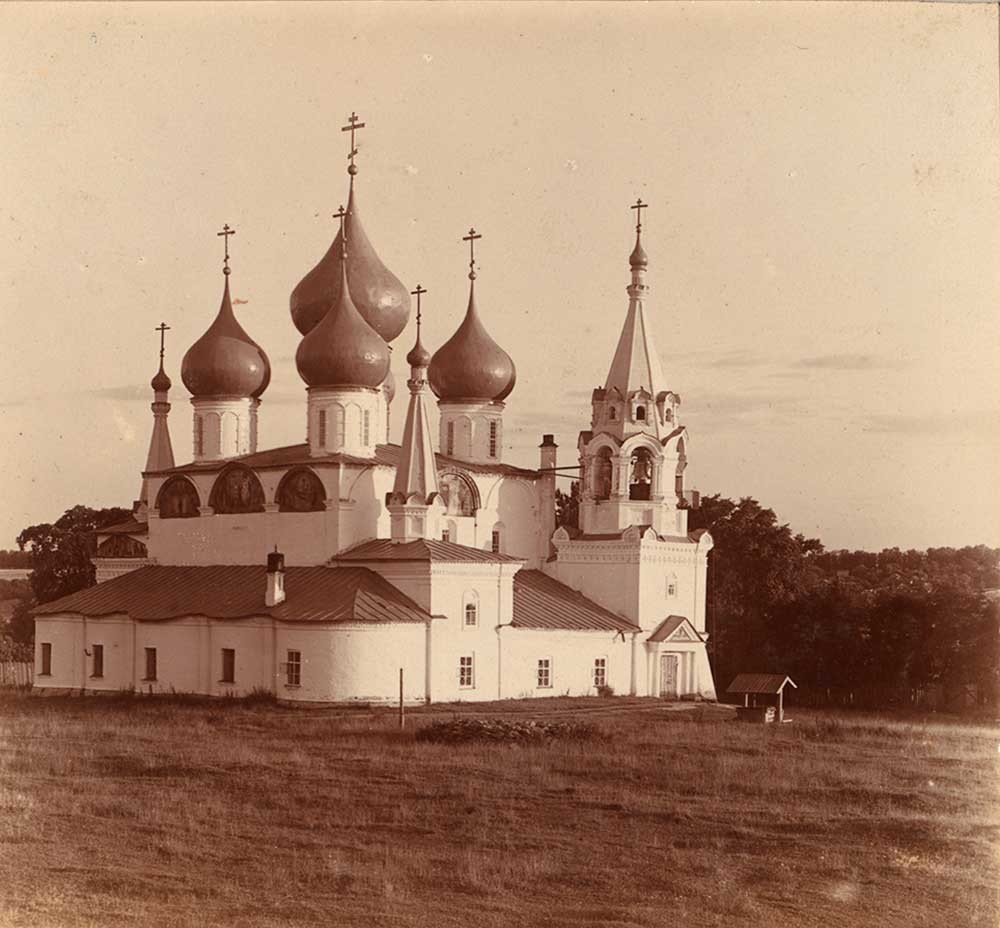
Cathedral of Elevation of the Cross. Northeast view with attached chapels and bell tower. Summer 1910.
Sergei Prokudin-GorskyA long, unsettled history
The settlement of Romanov was established in the late 13th century following the sanctification of Roman Vladimirovich, a feudal prince based in nearby Uglich. At its center was a log church dedicated to the Elevation of the Cross. To its continued misfortune, the settlement proved vulnerable to raids by Tatars and mercenaries from Novgorod the Great, the medieval commercial power of northwest Russia.
Later in the 14th century, Romanov was taken into the Yaroslavl Principality and rebuilt by Prince Roman Vasilevich. In the mid-15th century, Romanov entered the orbit of Muscovy and became a domain of Grand Princess Maria Yaroslavna, mother of one of medieval Russia’s most successful rulers, Ivan III (the Great). In 1491, Romanov was formally absorbed into Muscovy.

Cathedral of Elevation of the Cross. South view. July 25, 1997.
William BrumfieldOver a period of two centuries the policy produced mixed results, and in 1760, Empress Elizabeth ordered the resettlement of unconverted Romanov Tatars to the Volga town of Kostroma. Yet the Tatar presence provided Romanov with one important legacy—a breed known as Romanov sheep, whose fleece was especially valued for the making of sheepskin coats.
In the early 17th century, Romanov, like so many other towns in the area, was raided and burned during the dynastic crisis known as the Time of Troubles. The establishment of the Romanov dynasty (no connection to the town of Romanov) gradually brought a measure of stability to central Russia.
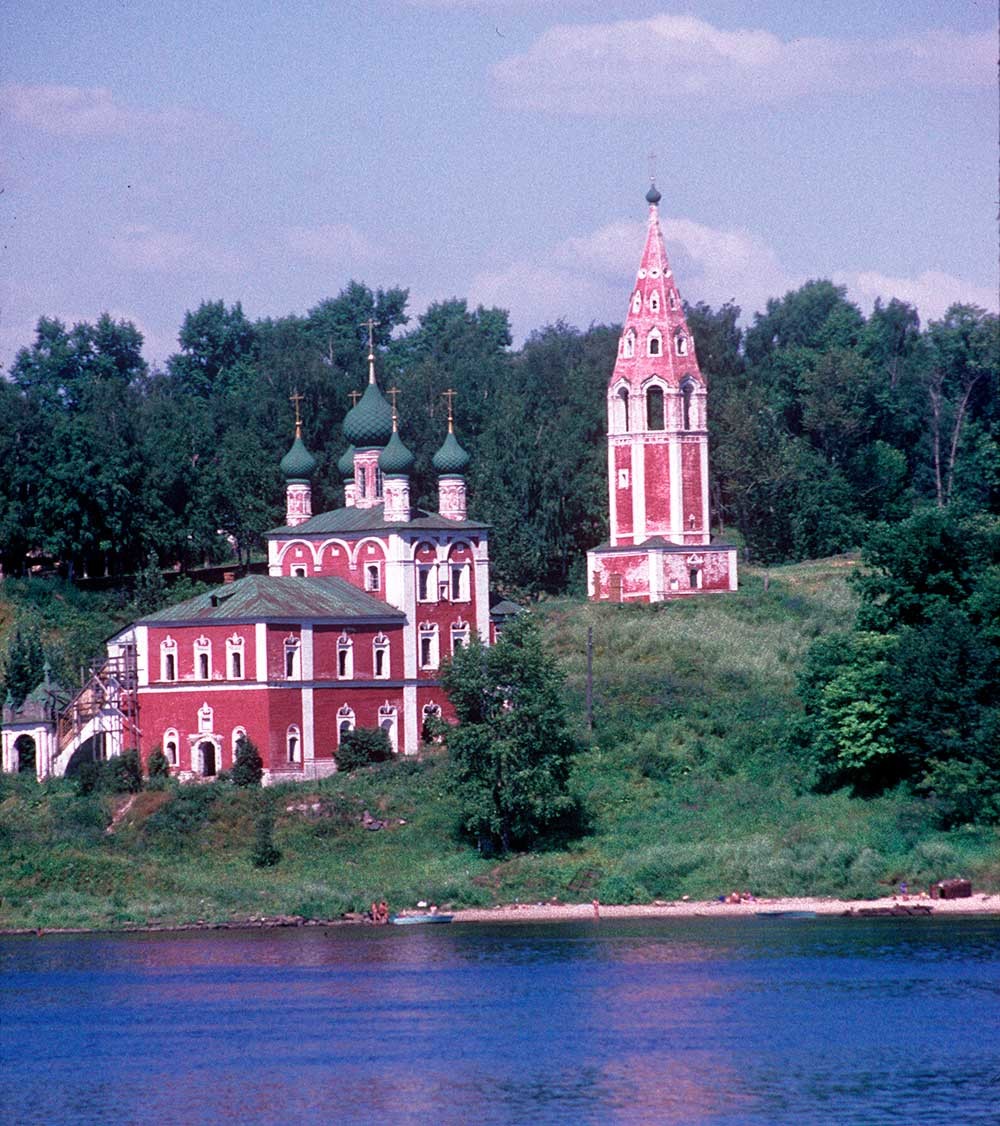
Bell tower & Church of Kazan Icon of the Virgin. Southwest view from right bank of Volga River. July 25, 1997.
William BrumfieldArchitectural legacy
Although benefiting from the economic revival, Romanov was shaken by an Orthodox Church schism that arose in the 1650s in opposition to a series of liturgical reforms. A notable leader of the Old Belief (as the church dissent was known) was a Romanov priest named Lazar, who died in northern exile in 1682. Old Believers were an important presence in Romanov, and perhaps this implicit challenge stimulated the official Orthodox Church to embark on a program of construction in Romanov and Borisoglebsk over the next century.
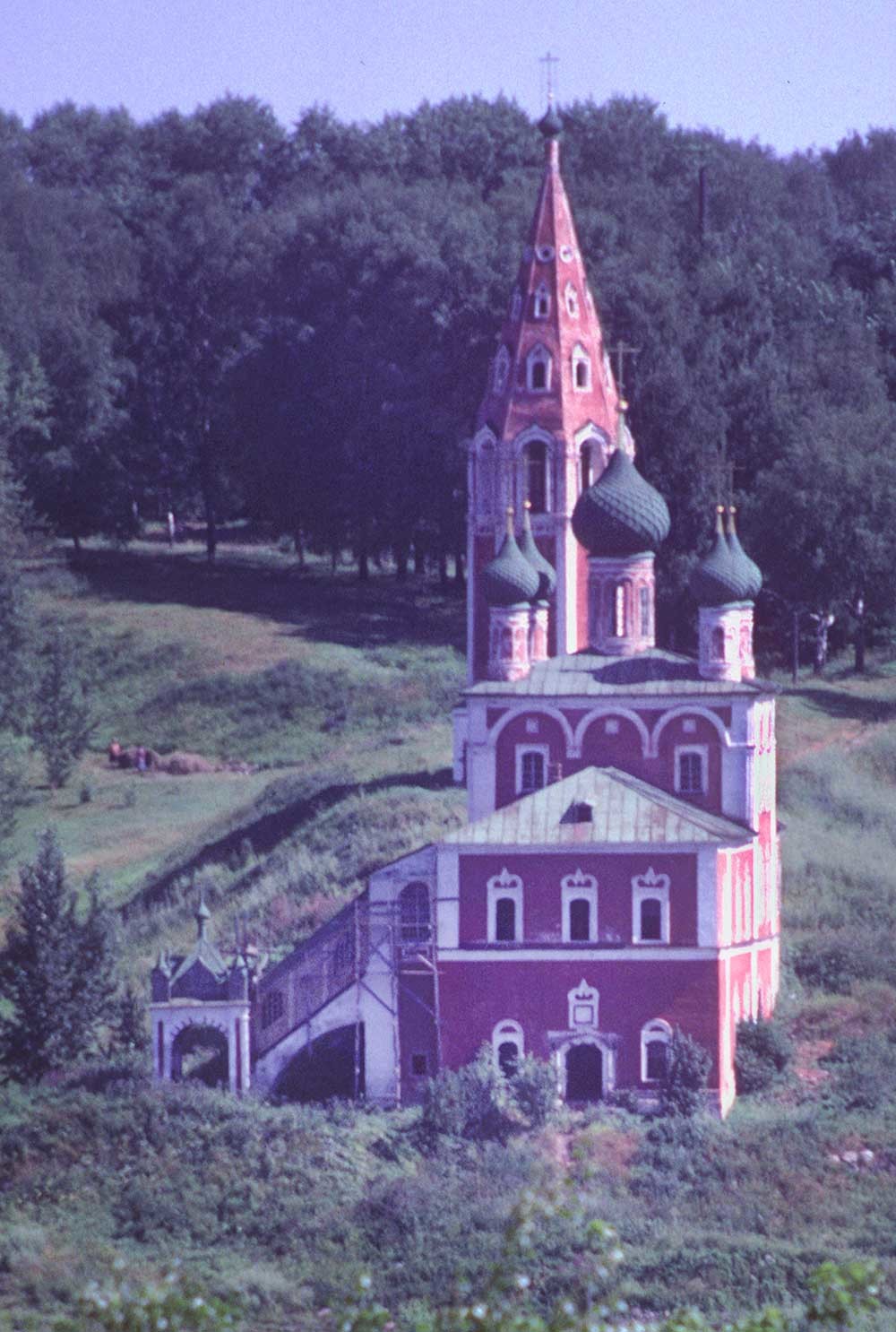
Bell tower & Church of Kazan Icon of the Virgin. West view from Borisoglebsk. July 25, 1997.
William BrumfieldThe central church of Romanov--dedicated to the Elevation of the Cross—had been built and rebuilt of wood from time immemorial. In the 1650s the cathedral (as it had become) was reconstructed of brick in a traditional 16th-century style. Crowned with five large cupolas, the central structure was flanked on the north and south by attached chapels dedicated to the Presentation and the Smolensk Icon of the Virgin. A bell tower with a conical cap (or “tent”) was attached to the northwest corner.
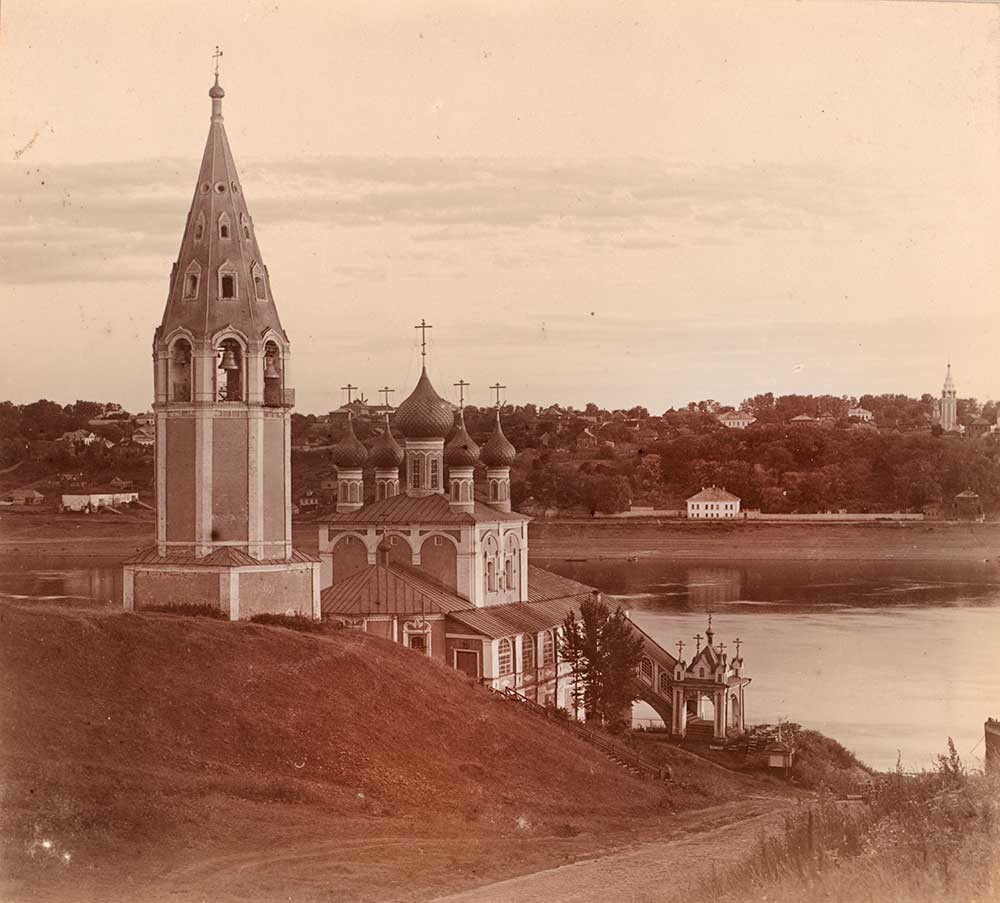
Bell tower & Church of Kazan Icon of the Virgin, northeast view. Background: Borisoglebsk (right bank of Volga) with bell tower of Resurrection Cathedral. Summer 1910.
Sergei Prokudin-GorskyProkudin‑Gorsky's photograph over an open field from the northeast sharply captures the various components. Originally, however, the structure was
Closed in 1930, the cathedral and its pilfered icon screen were returned to the Orthodox Church in 1992. My photographs from 1997 show a good state of preservation on the exterior. On the interior, late 17th-century frescoes had partially survived the Soviet period but are now in a state of severe deterioration from ecological causes
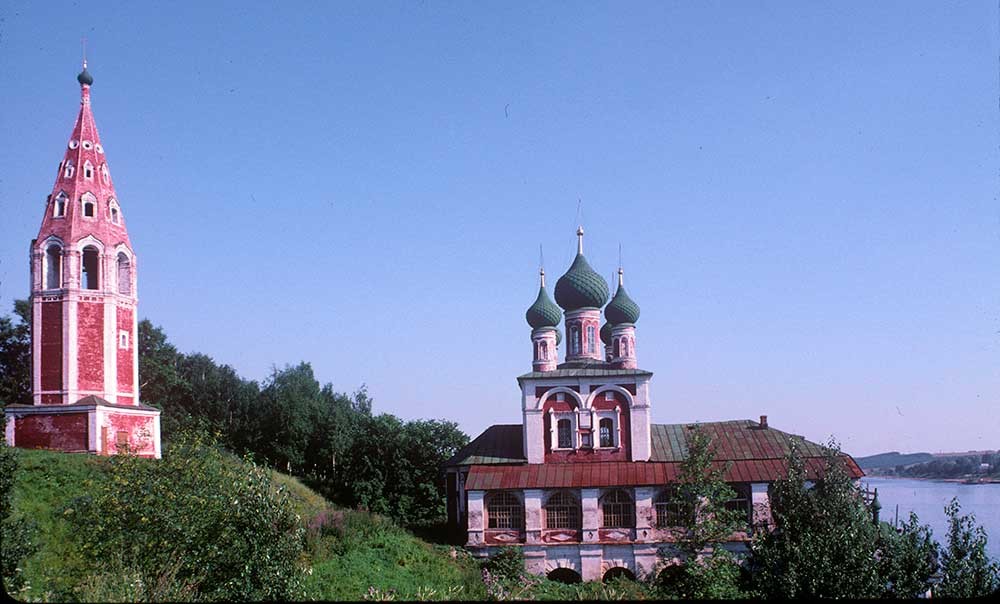
Bell tower & Church of Kazan Icon of the Virgin. North view with Volga River. July 26, 1997.
William BrumfieldParticularly striking is the placement of a slender free-standing octagonal bell tower on the east crest above the church. Painted bright red with white trim, this array of simple geometrical forms cascades down the steep left bank of the Volga. Like its counterpart at the Resurrection Cathedral directly across the river, the bell towers serve as superb beacons above the Volga on its course to the city of Yaroslavl
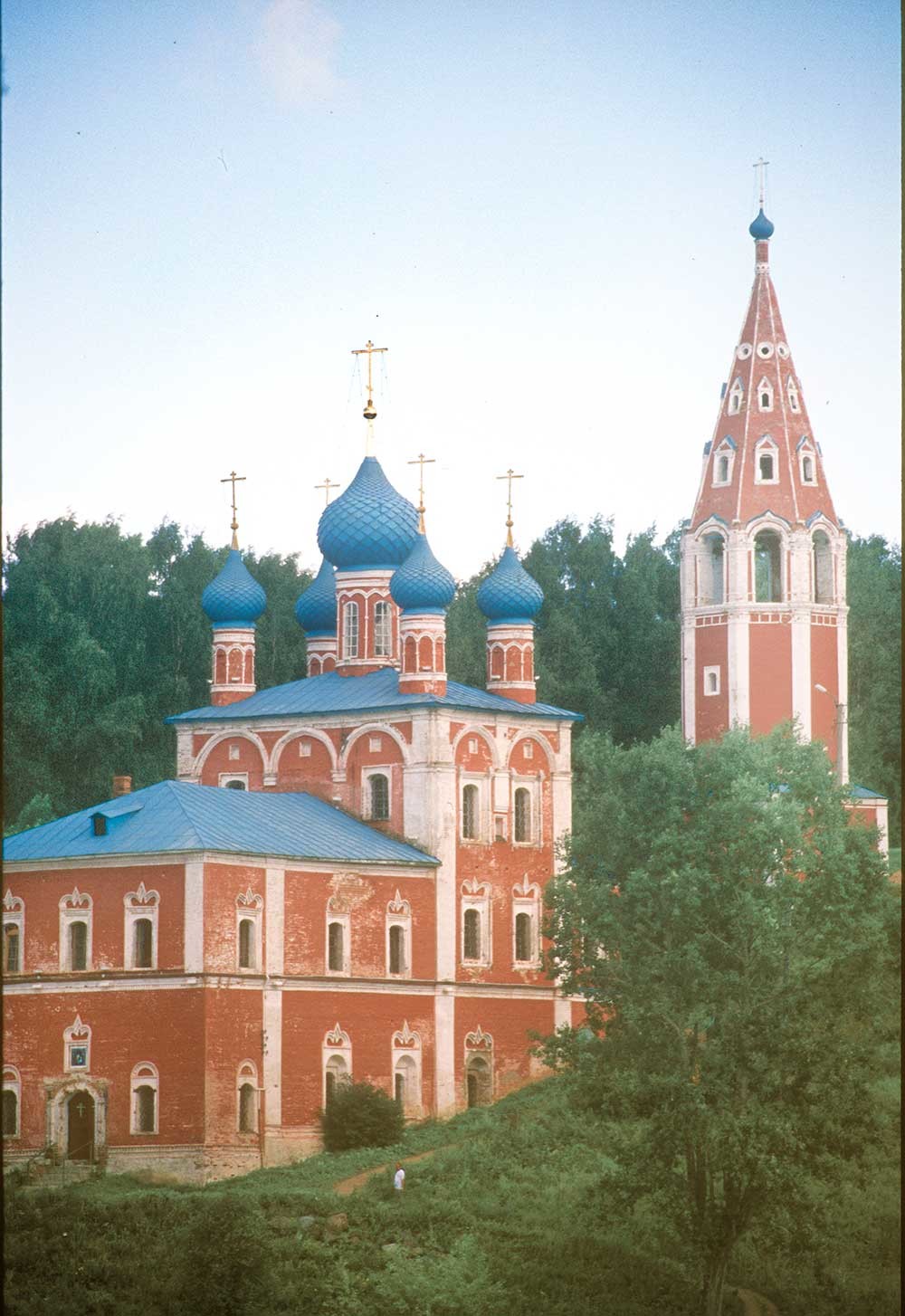
Bell tower & Church of Kazan Icon of the Virgin. Southwest view from Volga River. July 15, 2007.
William BrumfieldAlthough the original glass negative is not extant, Prokudin‑Gorsky's view captures the church components in their relation to the river. My photographs over the period of a decade include views from the river as well as from the bluff above. There is nothing else quite like this festive church, climbing to heaven.
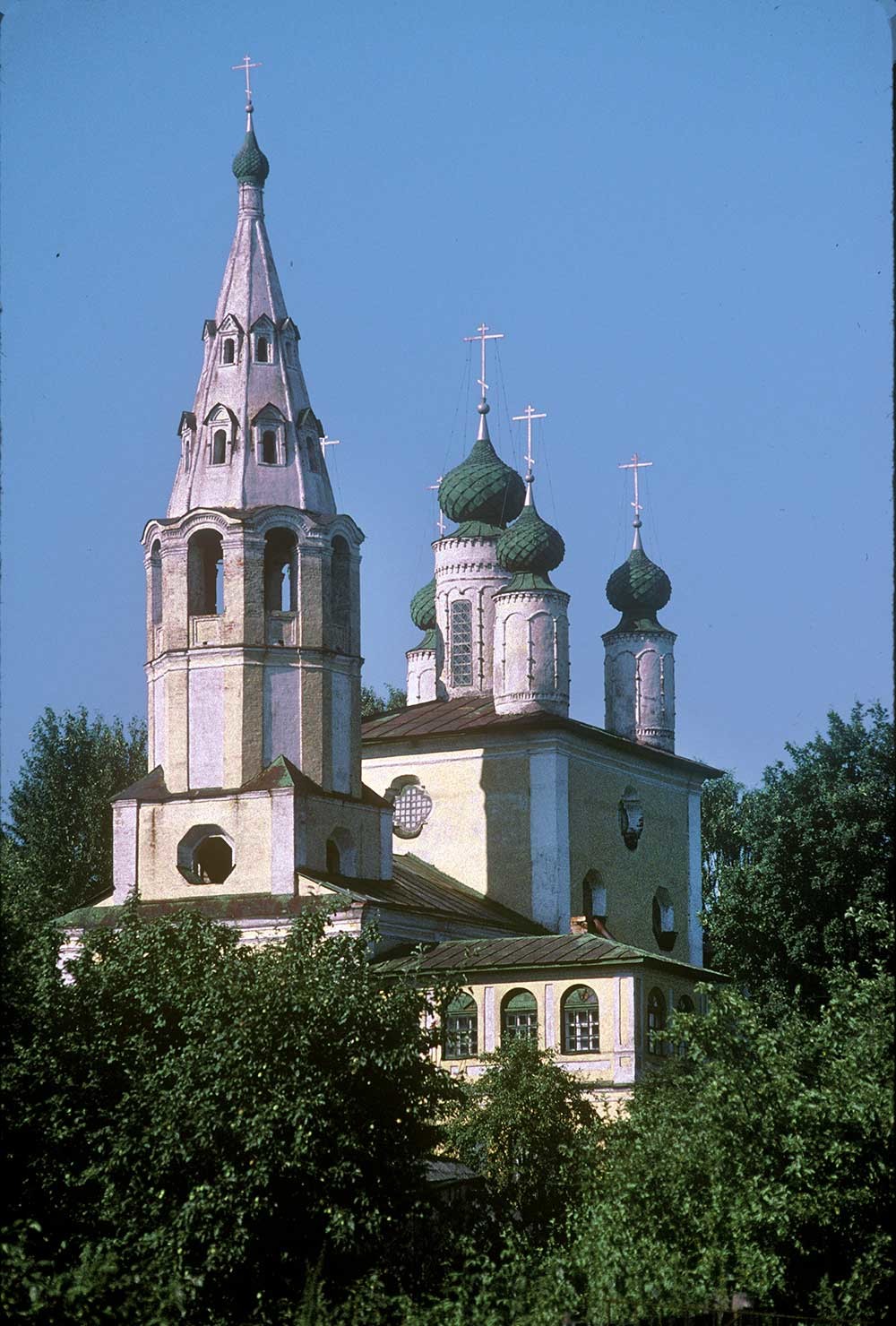
Bell tower & Church of Archangel Michael. Southwest view just upriver from Kazan Church. July 26, 1997.
William BrumfieldIn the early 20th century the Russian photographer Sergei Prokudin-Gorsky devised a complex process for color photography. Between 1903 and 1916 he traveled through the Russian Empire and took over 2,000 photographs with the process, which involved three exposures on a glass plate. In August 1918, he left Russia and ultimately resettled in France with a large part of his collection of glass negatives. After his death in Paris in 1944, his heirs sold the collection to the Library of Congress. In the early 21st century the Library digitized the Prokudin-Gorsky Collection and made it freely available to the global public. A number of Russian websites now have versions of the collection. In 1986 the architectural historian and photographer William Brumfield organized the first exhibit of Prokudin-Gorsky photographs at the Library of Congress. Over a period of work in Russia beginning in 1970, Brumfield has photographed most of the sites visited by Prokudin-Gorsky. This series of articles juxtaposes Prokudin-Gorsky’s views of architectural monuments with photographs taken by Brumfield decades later.
If using any of Russia Beyond's content, partly or in full, always provide an active hyperlink to the original material.
Subscribe
to our newsletter!
Get the week's best stories straight to your inbox